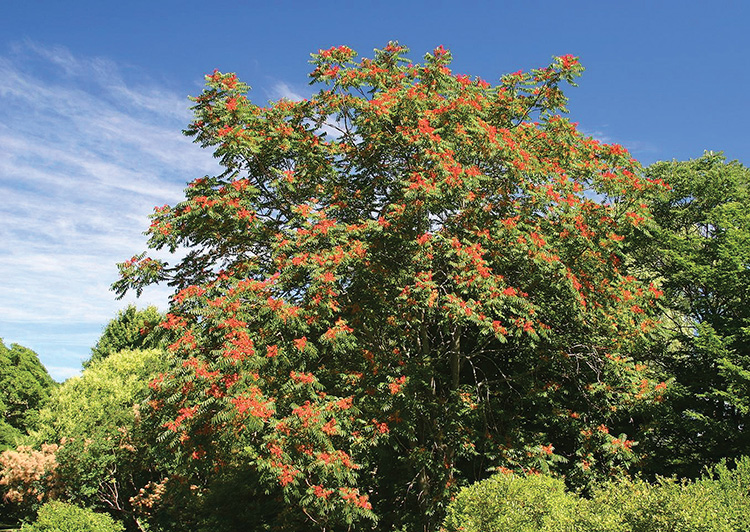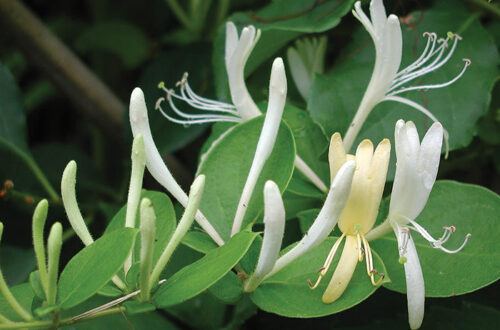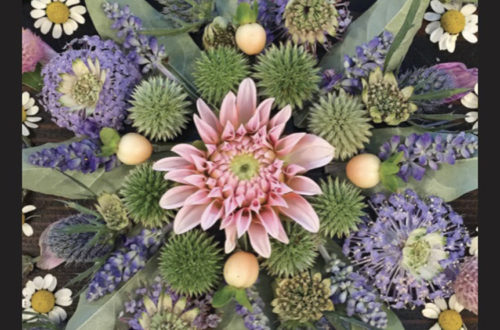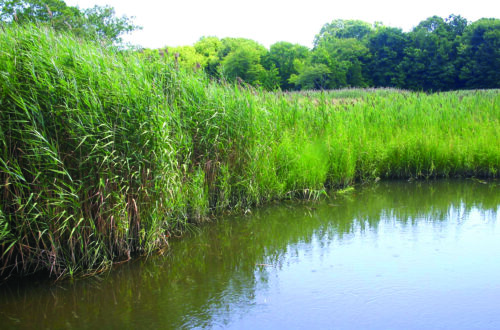
SEPT-OCT 2017 – Tree of Heaven (Ailanthus altissima) is a consummate survivor that tolerates a wide range of climatic and soil conditions. A single tree can produce thousands of wind-born seeds, or samaras, that are released gradually over time.
The tree can also reproduce asexually (vegetatively) via root sprouts. This is particularly helpful in low-light conditions where seedlings might not do so well.

It may be the fastest growing tree in North America. Sprouts and suckers can grow 14 feet or more in the first season. Seedlings can grow 6 feet in their first year.
Younger trees grow faster than old ones, allowing it to take quick advantage of disturbances in the landscape. It can establish dense clonal colonies that exclude native species.
It’s also drought tolerant and pollution resistant. Give it a vacant lot or a crack in the pavement and off it goes. About the only conditions it doesn’t like are flooding and deep shade.
In addition to being extremely aggressive, it’s also allelopathic … it produces a toxic substance (ailanthone) that deters the growth of other plants.
Its root system, which can reach out 50 feet or more, can damage foundations, sidewalks, sewers and underground pipes.
Tree of Heaven has also made some literary inroads. It appears as a metaphor in William Faulkner’s Sanctuary and Betty Smith’s A Tree Grows in Brooklyn. Alas, it grows pretty much everywhere else, too. The next time you take a drive, look for it on the side of road … it’s probably there.
Tree of Heaven is native to central and northeast China. It was first brought to the U.S. in the late 1700s in Pennsylvania. Considered a specimen tree at the time, it became common in nurseries and was often used as an ornamental street tree. It was introduced on the West Coast by Chinese immigrants.
The male blooms, in particular, have an unpleasant odor, similar to the smell of cat urine.
It’s dioecious, male and female flowers occur on different plants. Crumbled leaves are often described as smelling like rancid peanut butter.
The wood is weak, it drops a lot of twigs and has a weedy suckering habit. It’s considered a noxious weed in many countries.
Tree of Heaven is considered invasive in Connecticut and is prohibited from importation, movement, sale, purchase, transplanting, cultivation and distribution under Connecticut’s General Statutes. See cipwg.uconn.edu for more information.
Its 30-70 year life span is relatively short for a tree. However, cloning from root sprouts can extend its life for hundreds of years. According to the U.S. Forest Service, “Sprouts from the first tree-of-heaven in North America, planted in Philadelphia’s Bartram Botanical Garden in 1784, still existed at the turn of the 21st century.”
Given all these qualities, it’s no surprise that its nicknames include Brooklyn palm, stink tree, stinking sumac and tree of Hell.
Description
Ailanthus altissima is a deciduous tree that flowers from June to July and fruits in the fall. Some of the samaras (winged seeds) persist into the winter. Trees can reach 80 feet in height.
• Large alternate pinnately compound leaves are up to 3 foot long, generally with 11-25 pointed leaflets that are 3-5 inches long and 1-2 inches wide. The leaflets, which are held on 1⁄4-3⁄4 inch petiolules, have 2-4 lobes or glands on the underside at the base.
• Large clusters of yellowish green flowers are held in terminal clusters (panicles) up to 16 inches long.
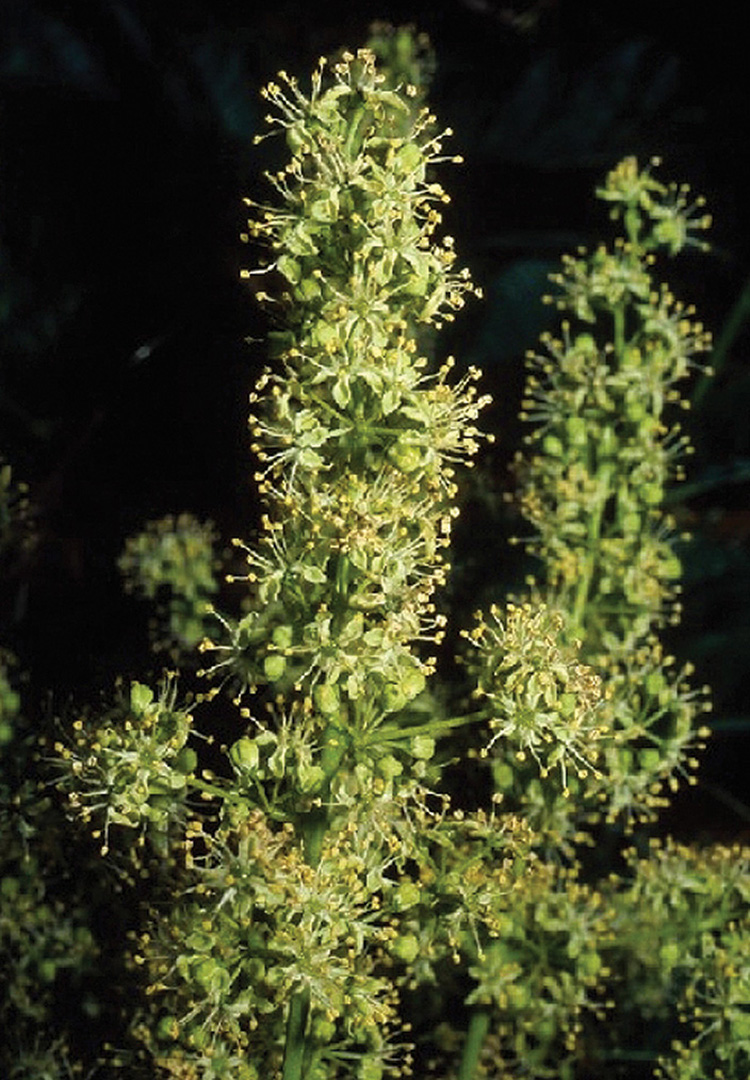
• Reddish-brown seeds with papery wings form on female trees from August to October and persist through the winter. Each slightly twisted samara is 1.5 inches long and contains one central seed. The seeds are dispersed from October until April.
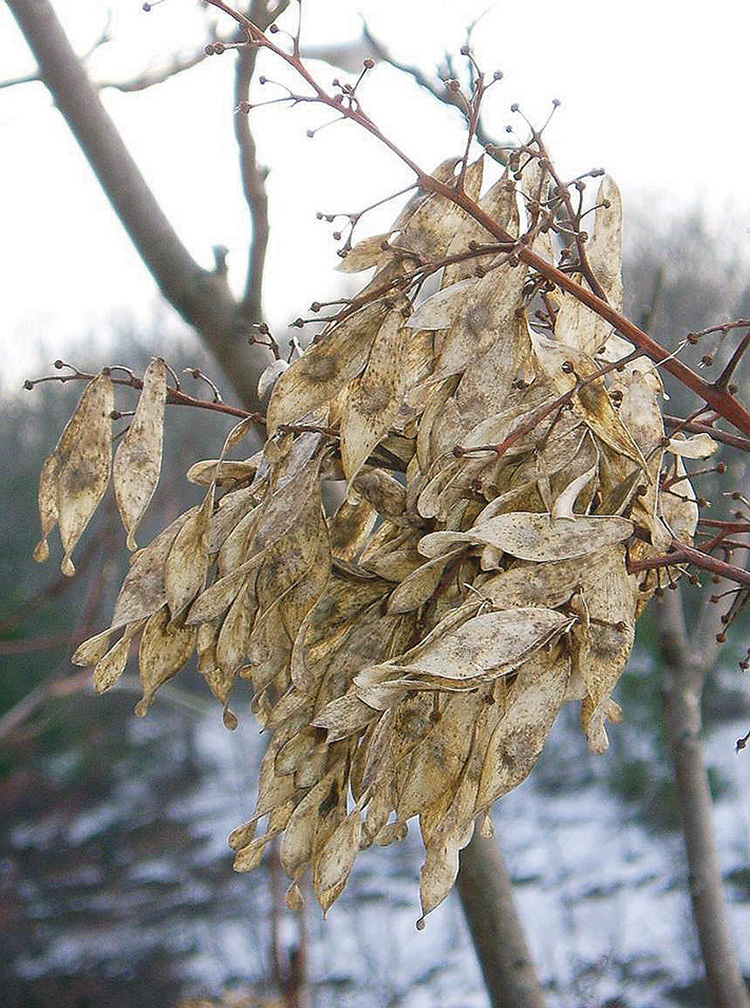
• The smooth grayish bark resembles cantaloupe skin and the twigs are light brown.
Look-alikes
Several trees and shrubs also have pinnately compound leaves. These include white ash (Fraxinus americana), black walnut (Juglans nigra), hickory (Carya sp.), and staghorn sumac (Rhus typhina). It can be distinguished from these trees by its smooth leaf margins, its smell and the glands on the underside of the leaflets.
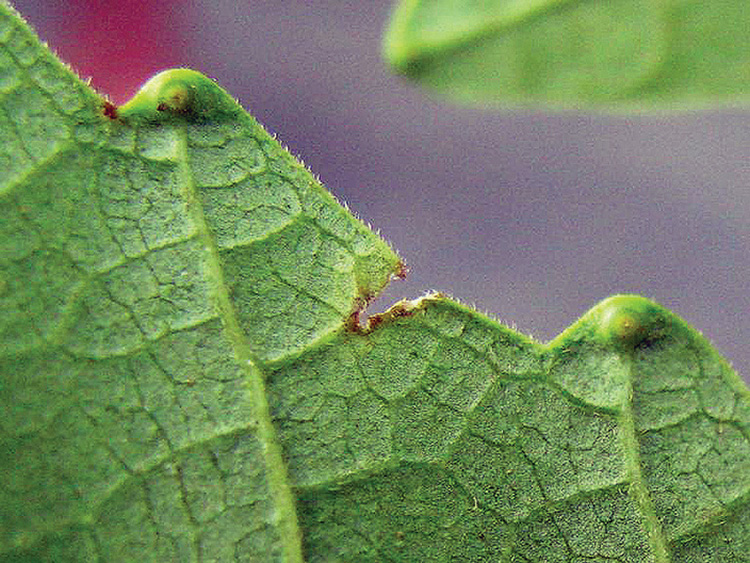
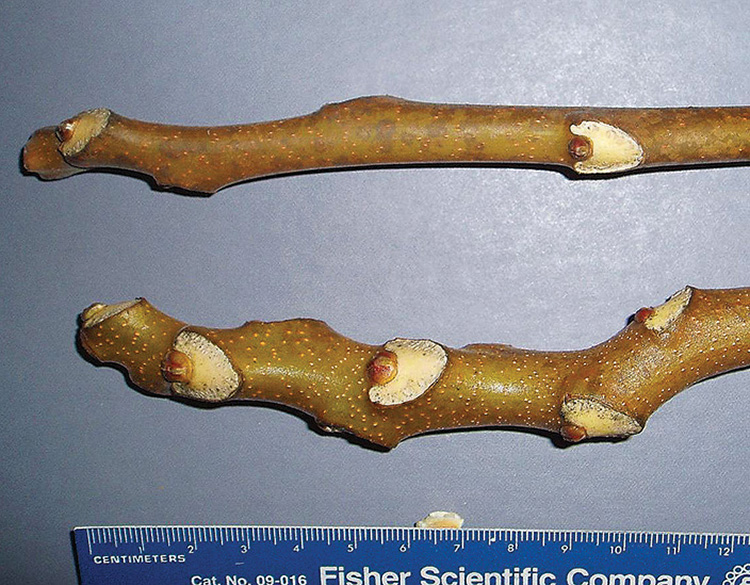
Mechanical Control
Cutting back must be done repeatedly until it exhausts reserves, otherwise it will resprout with a vengeance. Cut back in early summer when root reserves are low.
When pulling, you have to get everything or it will resprout from any remaining roots and root fragments.
Chemical Control
We don’t like using (or recommending) this stuff but sometimes your options are limited. Remember – the label is the law.
Cut and paint stems with an herbicide such as triclopyr. This works best late in the growing season when nutrients are being sent to the roots.
For information on more drastic methods check out nps.gov/plants/ alien/fact/pdf/aial1.pdf
Biological Control
A number of fungal pathogens are being investigated as potential biocontrols.
– Will Rowlands
